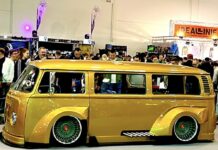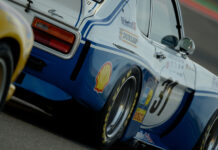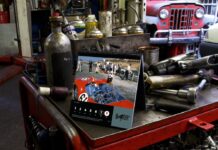In 1987 the F40 took the world by storm. And then, eight years later, Ferrari did it all over again with the F50.

Launched at the Geneva International Motor Show in 1995 ostensibly to commemorate Ferrari’s 50th anniversary, the successor to the F40 jumped the gun by a couple of years.
Commissioned by then Ferrari President, Luca di Montezemolo, to represent the absolute pinnacle in road car technology, the F50’s remit was a challenge: to transfer racing know-how to a limited-series supercar and – for just a small number of clients – replicate (as closely as possible) the complete Formula One experience on the open road.
Watch an exclusive video telling the story of the legendary F50, a car that faithfully replicated the F1 experience for the road
Designed by Pininfarina, the F50 was equipped with an engine developed from the naturally-aspirated 3.5 litre V12 that, in turn, powered the F1-90 to six wins in the 1990 season, when Alain Prost claimed five victories and Nigel Mansell one. Clearly, a considerable amount of work was required to render that fearsome, 5-valve per cylinder engine suitable for a road-going car, where power and torque peaking close to a 12,750 rpm top end would have been a handicap.
So the capacity was eventually increased to 4.7 litres, and while the horsepower boost over the F40 wasn’t huge (just over 40 cv more), variable-length inlet tracts and a variable exhaust system (with butterfly by-pass valves in the 6-into-2-into-1 headers) made power and torque more easily accessible up to the 8500 rpm red line. Together with the progress made on the chassis and suspension, the increase in overall performance was sufficient to drop the Fiorano lap time by four seconds.

The beautiful lines of the F50 hid a Formula 1 derived 3.5 litre V12 engine capable of sending the car from 0-100kmh in a scarcely believable 3.87 seconds
Designed in-house by the advanced Ferrari Engineering arm based in the Carrozzeria Scaglietti plant in Modena, that chassis was the other element derived directly from Formula One technologies.
The monocoque was in T300 pre-preg carbon fibre and was built by ATR, while the carbon-fibre body panels were made by Re Fraschini. In yet another direct nod to the single seater, the V12 powertrain was a stressed member, bolted directly to the chassis, with the gearbox housing supporting the rear suspension. The suspension was again of racing derivation, with push-rods and double wishbones all round and in-board Bilstein shock absorbers with electronic damping.

The result was a true successor to the F40, although there can be few direct comparisons between the two in terms of technology or driving impressions. The F40 was catapulted to 324 km/h by a raw, no-frills-attached turbocharged V8, while the F50 screamed its way to 325 km/h courtesy of that naturally-aspirated V12 from the F1-90.

These rarely-seen design sketches show the initial development of the F50, which was helmed by Pininfarina and aimed to move Ferrari forward from the popular F40 predecessor

And while the F40 had been designed with minimum creature comforts (the doors even had wire pulls inside to open them), mechanically the F50 was just as pure, with no brake servo and unassisted steering.
The interior, designed in-house by Ferrari Engineering, was still quite spartan, albeit with an advanced – for the time – LED dash. With Ferrari’s innovative F1 paddle-shift technology still a couple of years away in production, the F50 would be the last limited-edition supercar to be equipped with a manual 6-speed gearbox.

But the big difference between the F40 and the F50 was to be found not in the cars themselves, but on the production line. A total of 1,311 F40s were built between 1987 and 1992. The F50? Just 349 examples were made from 1995 to 1997, making it not just the closest thing to a road-going F1 car Ferrari had ever made, but one of the rarest too.

Under the targa-top the interior of the F50 was similar to the F40 in that weight-saving was key without sacrificing the style for which Ferrari was known the world over

Sadly, Enzo Ferrari himself never saw – or more importantly ‘heard’ the F50 – but the 1995 Geneva International Motor Show will always be the place where Ferrari demonstrated to the world that through relentless innovation, design and racing performance, perfection will always be just one more car away. Find out more
Report by Ross Brown for ferrari.com











